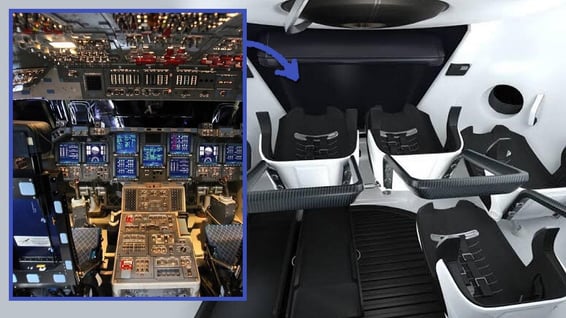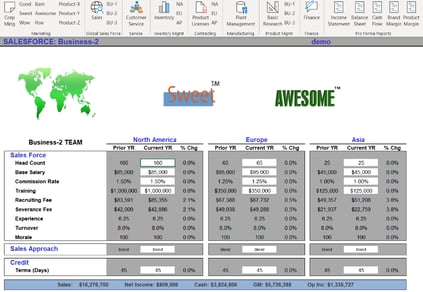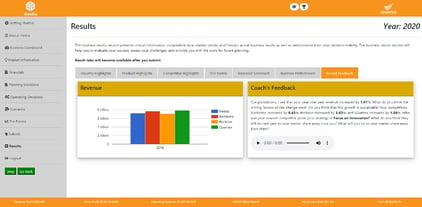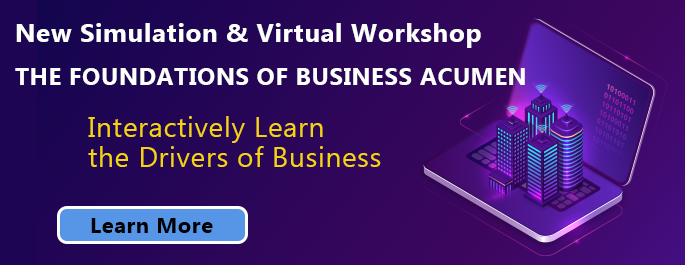One of the only positive outcomes from a very tough weekend for our country was the couple of  minutes of pride we all had watching the launch of the Space X Dragon into outer space as part of the next generation of exploration.
minutes of pride we all had watching the launch of the Space X Dragon into outer space as part of the next generation of exploration.
Having been just 7 years old in 1969 during the moon landing and the heyday of the space program, I can remember vividly building a full scale NASA lunar module as a 3rd grade project and then years later seeing the actual spacecraft in the Smithsonian in Washington, DC. From a design perspective it was incredibly sophisticated for the time – more than 50 years ago - and something that took my breath away when thinking about the 3 astronauts inside flying home after making history.
Warp ahead to the mid-80’s and into the 90’s NASA’s Space Shuttle program. The systems and design were light years ahead of the previous generation, and again something amazing to behold. In the picture below on the left, you can see the level of sophistication and complexity of the cockpit of the space shuttle.
The picture on the right is the cockpit of the SpaceX Dragon. It is simply exquisite from a design perspective. The words that come to mind are clean, simple, and sophisticated. From the first manned flight in 1961 (Alan Sheppard), to the first orbit of the planet (John Glenn), to the landing on the moon (Armstrong) to the space shuttle program, Space X is truly space exploration 5.0. Whatever you may think of him as a person and a businessperson, Elon Musk has done something unique and special.
As I was watching and understanding the history being made this past weekend, I couldn’t help but think of the similarities between the design evolution of the systems that drive space equipment and the design evolution of business simulations.
In explaining what a Business Simulation is, we often make the analogy that just like a pilot going through a flight simulator to fly a place, business simulations enable business people to learn how to fly a business.
In the very beginning, before the invention of the personal computer, there was the DECsystem 10  mainframe that gave birth to our first-generation business simulation. From the mid-1980s and the proliferation of the personal computer there was simulation 2.0. The release of windows and the dot.com
mainframe that gave birth to our first-generation business simulation. From the mid-1980s and the proliferation of the personal computer there was simulation 2.0. The release of windows and the dot.com
boom (and bust) saw version 3.0, and about 15 years ago, Advantexe started development of our own simulation technology 4.0. At the time we launched it, it felt sleek and most importantly it worked. The interface was flexible and allowed us to customize quickly and to the needs of our clients.
But like the space shuttle technology, our simulation designs became antiquated and had to be  updated. Our new business simulation design and interface feels like the SpaceX Dragon. Sleek, clean, and sophisticated with the addition of Artificial Intelligence built into the results. The new interface not only looks better, it provides a more engaging and collaborative learning experience. Because it is 100% cloud-based, the new approach processes instantly, generates better reports, presents data in a visually effective way, and can access sophisticated built-in help in real time.
updated. Our new business simulation design and interface feels like the SpaceX Dragon. Sleek, clean, and sophisticated with the addition of Artificial Intelligence built into the results. The new interface not only looks better, it provides a more engaging and collaborative learning experience. Because it is 100% cloud-based, the new approach processes instantly, generates better reports, presents data in a visually effective way, and can access sophisticated built-in help in real time.
Today, as we are all navigating our way through the pandemic and the transformation to virtual learning solutions, this new simulation design approach is providing learners with the best possible learning experience they can find. It is engaging and powerful and is making an immediate impact on business results. And just like the Space X program, the future feels bright and unlimited.




